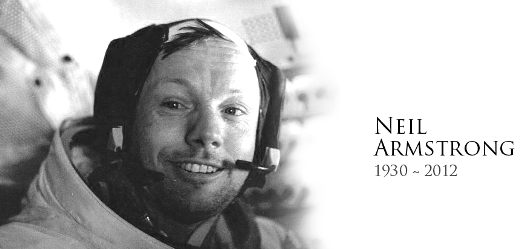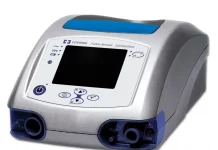
US Neil Armstrong First Man to Step on Moon Dead at 82: Neil Armstrong, Age-82, died at 2:45 p.m. on Saturday after suffering complications following his recent cardiac bypass surgery earlier this month for blocked arteries. A fighter pilot in the Korean War, a test pilot and an engineering professor, he will also be remembered as the astronaut who fulfilled the goal that President John F. Kennedy set out to put a man on the moon by end of the 1960’s and the first among equals in the pantheon of astronauts from the moon race.
His Family said in a statement that the cause was “complications resulting from cardiovascular procedures.” He had undergone heart bypass surgery this month in Cincinnati, near where he lived. His recovery had been going well, according to those who spoke with him after the surgery, and his death came as a surprise to many close to him, including his fellow Apollo astronauts. The family did not say where he died.
Armstrong was a pilot first and foremost, and with the dust flying, craters looming and fuel running low on July 20, 1969, he never wavered. As everyone else on Earth held their breath on that day, his heartbeat never changed as he and co-pilot Buzz Aldrin made the first piloted landing upon the moon.
His family said they had a simple request to people in memory of Armstrong’s life.
Born in Wapakoneta, Ohio on August 5, 1930, Armstrong had an early fascination with aircraft and worked at a nearby airport when he was a teenager.
He took flying lessons at the age of 15 and received his pilot’s license on his 16th birthday.
A US Navy aviator, he flew 78 missions in the Korean War.
Armstrong joined NASA’s predecessor agency, the National Advisory Committee for Aeronautics, in 1955.
As a research pilot at NASA’s Flight Research Center in Edwards, California, he flew on many pioneering high-speed aircraft, eventually flying over 200 different models, including helicopters, gliders, jets and rockets.
He reached astronaut status in 1962, and was assigned as command pilot for the Gemini 8 mission, during which he performed the first successful docking of two vehicles in space.
After retiring from NASA in 1971, Armstrong taught aerospace engineering at the University of Cincinnati for nearly a decade and served on the boards of several companies, including Lear Jet, United Airlines and Marathon Oil.
He also worked as deputy associate administrator for aeronautics at NASA headquarters, coordinating and managing the space agency’s aeronautics research and technology tasks.
“Honor his example of service, accomplishment and modesty, and the next time you walk outside on a clear night and see the moon smiling down at you, think of Neil Armstrong and give him a wink,” it said.
A quiet, private man, at heart an engineer and crack test pilot, Mr. Armstrong made history on July 20, 1969, as the commander of the Apollo 11 spacecraft on the mission that culminated the Soviet-American space race in the 1960s. President John F. Kennedy had committed the nation “to achieving the goal, before the decade is out, of landing a man on the Moon and returning him safely to Earth.” It was done with more than five months to spare.
“Tranquility Base here. The Eagle has landed,” Armstrong informed mission controllers at NASA’s Johnson Space Center, with the restrained aplomb that marked his life. Two and a half hours later with the words, “That’s one small step for (a) man. One giant leap for mankind,” he stepped upon the moon for the first time.




